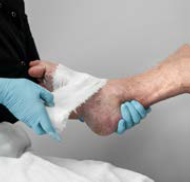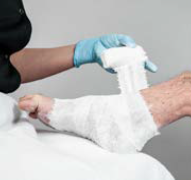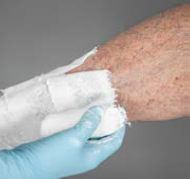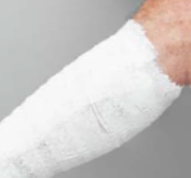Viscopaste
Viscopaste bandaging is a zinc oxide paste infused bandage and is recommended in the management of chronic leg ulcers and eczema.
On this page
Zinc is an important factor in wound healing, as it can:
- help break down slough and eschar.
- promote epithelialization and granulation (process of wound healing).
- stop bacterial growth.
- soothe and moisten dry skin.
- maintains a healing environment.
How to apply Viscopaste bandaging
It is recommended that when applying Viscopaste bandaging you do so in pleat formation, to accommodate any oedema affecting the limbs.
Beginning at the base of the toes, the bandage should be loosely wrapped around the foot and heel and then, while wrapping, with every turn, the bandage should be folded back on itself in a pleat, at the front of the leg. This should be repeated up the leg until just below the knee.
Viscopaste bandages are primary dressings. If the wound has moderate to high exudate (leaking fluid) then a secondary dressing over the Viscopaste bandage should be applied. A further loose bandage to cover is advisable to avoid soiling clothing or bedding.
This dressing should be applied daily.
Step 1

Clean and dry the skin.
Step 2
Apply a primary dressing or barrier product as required.

With the foot at 90 degrees to the leg, commence bandaging.
Step 3

Start at the side of the foot.
The bandage should be folded back on itself in a pleat, at the front of the leg. This is to avoid compression of the foot and leg, should the leg become swollen – see image 3.
Step 4

Continue pleat formation the whole way up the leg from the base of toes to the bottom of the knee joint.
Step 5
Smooth out the bandage on the leg before application of an outer bandage.
Wool and crepe are often the preferred option for comfort.
Tubi fast blue or yellow line would also be an appropriate dressing choice to use as a cover over the bandages.
Contact information
For further support or information please contact the:
Dermatology Department
Tel: 0300 422 5589
Monday to Friday